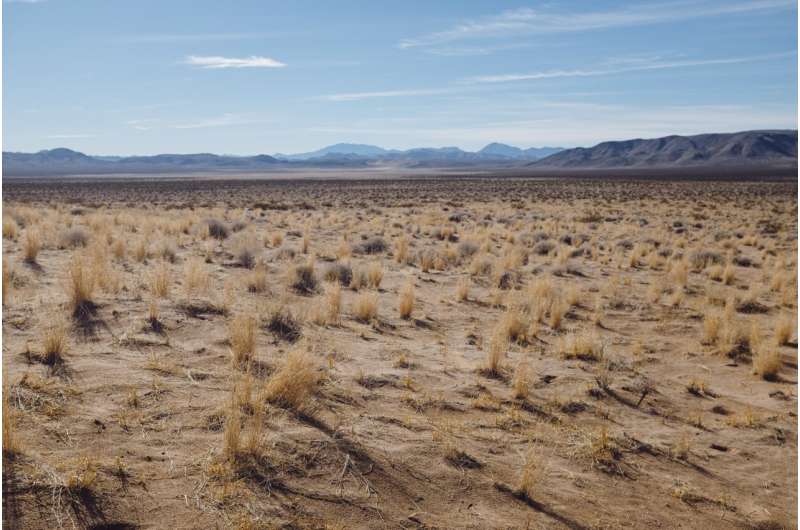This article has been reviewed according to Science X's editorial process and policies. Editors have highlighted the following attributes while ensuring the content's credibility:
fact-checked
trusted source
proofread
Study reveals physiological characters of desert plant seeds under warming and drought

Seeds are important in seedling establishment, community renewal and restoration of degraded vegetation in sandy grassland ecosystems. Understanding how temperature and precipitation changes affect physiological characters of desert plant seeds is essential for seed development.
Researchers from the Northwest Institute of Eco-Environment and Resources (NIEER) of the Chinese Academy of Sciences (CAS) determined seed physiological characters of Artemisia scoparia, Lespedeza davurica and Cleistogenes squarrosa under warming and drought conditions, to reveal the response ability and adaptation mechanisms of the three desert plant seeds to environmental changes in the same sandy grassland community.
The study was published in Acta Physiologiae Plantarum on July 8.
The researchers found that the seed malondialdehyde (MDA) content of C. squarrosa was the most sensitive to warming, suggesting that the oxidative stress caused by prolonged exposure to heat was likely to be responsible for the damage of C. squarrosa seeds.
Under natural temperature and severe drought conditions, the proline content of the three desert plant seeds increased significantly, which promoted their adaption to heat, reflecting the enhanced drought tolerance of the three desert plant seeds.
In addition, although warming and drought were closely related to the MDA and proline content of the three desert plant seeds, the combined stress of warming and drought had no significant effect on the MDA and proline contents of the three desert plant seeds.
Results also showed that temperature had the most significant effect on the physiological characteristics of A. scoparia and C. squarrosa seeds, while the correlation between precipitation and physiological characteristics of L. davurica seeds was very close.
Based on these results, the researchers inferred that the three desert plant seeds could adapt to desert environments and respond to heat and drought stress through different physiological regulation mechanisms.
"This study not only provides support for predicting climate response ability of desert plants, but also facilitates the assessment of impacts on sandy grassland ecosystems under climate changes," said Huang Wenda from NIEER, first author of the study.
More information: Wenda Huang et al, Effects of warming and precipitation reduction on physiological characters of dominant psammophytes' seeds in Horqin sandy land, northeast China, Acta Physiologiae Plantarum (2023). DOI: 10.1007/s11738-023-03576-x
Provided by Chinese Academy of Sciences





















